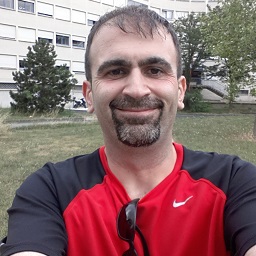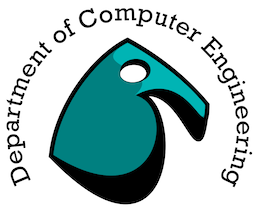Kaya Oğuz, PhD
Associate Professor, Department of Computer Engineering, Izmir University of Economics
Kaya Oğuz is an Associate Professor in the Department of Computer Engineering at İzmir University of Economics. He holds a PhD in Information Technologies from Ege University, an MSc in Computer Games Technology from Abertay University (UK), and a BSc in Software Engineering from İzmir University of Economics.
For more than a decade, Kaya has been teaching undergraduate and graduate courses at İzmir University of Economics, Canadian University Dubai, and Ege University. He has supervised numerous master's and doctoral theses, guiding students in both academic and applied research.
From 2019 to 2024, he served as Head of the Department of Computer Engineering at İzmir University of Economics. During the 2024-2025 academic year, he joined Canadian University Dubai as an associate professor, continuing his teaching and research.
His research focuses on machine learning, artificial intelligence in computer games, algorithms, and computational neuroscience. Through the ARIA Lab (Artificial Intelligence & Algorithms Lab), he also explores the applications of AI and algorithms in fields such as computer games, computational neuroscience, and software engineering education. He has published widely in international journals and conferences and actively collaborates with both academia and industry on interdisciplinary projects.
Beyond research, Kaya is dedicated to mentoring students and building academic communities, with a strong commitment to advancing both technological innovation and education.
Weekly Schedule
| Time | Monday | Tuesday | Wednesday | Thursday | Friday |
|---|---|---|---|---|---|
| 08:30 - 09:15 | CE221-3 | CE221-3 Lab | SE307 | ||
| 09:25 - 10:10 | CE221-3 | CE221-3 Lab | SE307 | ||
| 10:20 - 11:05 | CE221-3 | Beyza Altuner (MSc) | |||
| 11:15 - 12:00 | Office Hours | Gizem Akçay (MSc) | FENG 497 | ||
| 12:10 - 12:55 | CE221-6 Lab | ||||
| 13:05 - 13:50 | Tugay Direk (PhD) | CE221-6 | CE221-6 Lab | ||
| 14:00 - 14:45 | Büşra Temuçin (PhD) | Department Meeting | CE221-6 | Office Hour | |
| 14:55 - 15:40 | Mahsa Saeidi (MSc) | CE221-6 | Mirza Özmen (MSc) | SE307 Lab | |
| 15:50 - 16:35 | SE307 Lab | ||||
| 16:45 - 17:30 |
Graduate Theses
PhD Theses
- Tugay Direk - Community Detection on Directed Networks 🧑🎓 (Ongoing)
- Melek Büşra Temuçin - Understanding Human Learning Dynamics Through Reinforcement Learning in Gaming Environments 🧑🎓 (Ongoing)
- İrem Ercan - Exploring Spatial Perception: A Comparative Analysis on Wayfinding Behaviour in Real and Virtual Environment 🧑🎓 (Ongoing, Co-advising with Assoc. Prof. Dr. Didem Kan)
- Çisem Seyhan - Deprem Anında Yaya Tahliye Rotası Belirlenmesine Yönelik Davranış Temelli Bir Model Önerisi 🧑🎓 (Ongoing, Co-advising with Prof. Dr. Ebru Çubukçu, Dokuz Eylül University)
- Çağkan Uludağlı - Generating Meaningful Interactions Between Non-Playable Game Characters for Adaptive Gameplay 🎓 (Completed December 2023)
- Cemre Candemir - Çok Katılımcılı Sosyal Destek fMRI Çalışmalarında Değişim Noktası Tahminleme 🎓 (Completed September 2018, Co-advised with Prof. Dr. Serdar Korukoğlu, Ege University)
MSc Theses
- Onur Can Yaşar - Procedural Generation of Game Levels 🧑🎓 (Ongoing)
- Mirza Özmen - Balancing Character Stats in Turn-Based Games with Genetic Algorithms 🧑🎓 (Ongoing)
- Beyza Altuner - Machine Learning–Driven Budget Allocation for Enhanced Campus Sustainability 🧑🎓 (Ongoing, Co-advising with Prof. Dr. Fehmi Görkem Üçtuğ)
- Mahsa Saeidi - A Comparative Study of Artificial Intelligence Methodologies on the Emergence of Strategies in Grid-World Problems 🧑🎓 (Ongoing)
- Gizem Akçay - Reinforcement Learning Based Dynamic Inventory Optimization under Uncertainty 🧑🎓 (Ongoing)
- Eray Kaçmaz - Single Image Dehazing Using Convolutional Neural Networks 🎓 (Completed July 2023, Co-advised with Assoc. Prof. Dr. Mehmet Türkan)
- Tugay Direk - Computational Prediction of 3D Structures of G Quadruplex 🎓 (Completed July 2022, Co-advised with Assoc. Prof. Dr. Osman Doluca)
- Cansu Özkan - Feature Selection for Language Independent Speech Emotion Recognition 🎓 (Completed July 2022)
- Mert Akkanat - Application of Agile Software Development Practices in Software Engineering Education 🎓 (Completed July 2022)
- Kasım Muratoğlu - Assessment of Team and Individual Contribution in Computer and Software Engineering Education 🎓 (Completed February 2021)
- Dünya Kılavuz - Procedural Level and Mission Generation for Computer Games 🎓 (Completed August 2020)
- Melek Büşra Temuçin - Procedural City Generation using Cellular Automata 🎓 (Completed July 2020, Co-advised with Asst. Prof. Dr. İlker Kocabaş, Ege University)
- Gani Rahmon - Evaluation of Procedurally Generated Terrains via Artificial and Convolutional Neural Networks 🎓 (Completed July 2018, Co-advised with Assoc. Prof. Dr. Mehmet Türkan)
Projects
University - Industry Collaborated Projects
- KOSGEB - Küçük ve Orta Büyüklükteki İşletmelerin Yeşil Dönüşüm Hazırlık Seviyesini Ölçmeye Yönelik Dijital Araç Geliştirilmesi, 2025 (Completed)
- HangiKredi - Mikro Servislerin Yüksek Oranda Kullanılabilirliği için Düşük Bağımlılığa Sahip Bir Önbellek Geliştirilmesi, 2024-2025 (Completed)
- HangiKredi - Yüksek Frekanslı Çok Kaynaklı Verilerin Paralel İşlenmesi ve Bellek Tabanlı Eş Zamanlı Sunumu için Yenilikçi Bir Ağ Mimarisi Geliştirilmesi, 2024-... (Ongoing)
- Intecon - Yapay Zekâ ile Fatura-Sipariş Eşleştirme, 2024 (Completed)
- Piagmo - TUBITAK 1507, TUBITAK SME R&D Start-up Support Program, Yapay Zeka Destekli Okul Öncesi Dönem İçin Hazırlanmış Montessori Tabanlı Eğitici Mobil Oyun Geliştirilmesi, 2024-2025 (Completed)
- Masomo Limited - Mobil Oyun Yazılımı Geliştirme Süreçlerinin İyileştirilmesi, 2022-2023 (Completed)
- CANSET Yazılım Çevre Enerji Danışmanlık Hizmetleri Ticaret A.Ş. - Sektör Bazlı Karbon Ayak İzi Düşürme Yazılımı Geliştirilmesi, 2022-2023 (Completed)
Academic Projects
- Researcher, IEU, Scientific Research Project Support Program, Green-Edu-Rank”: Sürdürülebilir Bir Gelecek için Üniversite Performansı Skorlama Aracı’, 2025 (Ongoing)
- Advisor, TUBITAK 2218, National Postdoctoral Research Fellowship Program, PostDoc Dr. Ayşegül Pınar Acar, Müze Dışı Müze Eğitim Aracı Olarak Oyunlaştırılmış Artırılmış Gerçeklik Uygulamaları Üzerine Bir Tasarım ve Geliştirme Araştırması ile Yeşilova Höyüğü Ziyaretçi Merkezi Örneğinde Oyunlaştırılmış Artırılmış Gerçeklik Uygulamalarının Bilgi İletişimine Etkisinin Ölçümlenmesi 2023-2025 (Completed)
- Researcher, TUBITAK 1002, A Short term Support Module, Karaciğer Transplantasyonu Yapılan Hastalara Yönelik Geliştirilen Akıllı Telefon Uygulamasının İmmünosüpresif İlaç Kullanımına Uyum, Anksiyete ve Yaşam Kalitesi Üzerine Etkisi, 2023-2025 (Completed)
- Researcher, TUBITAK 3501, Career Development Program, Türk Sinema Tarihine Veriye Dayalı, Dijital Ve Açık Bir Yaklaşım: Yeşilçam Filmlerinin Üslup Özelliklerinin İncelenmesi, 2021-2025 (Completed)
- Researcher, IEU, Scientific Research Project Support Program, Outdoor Augmented Reality for Alternative Art Spaces, 2020-2022 (Completed)
- Researcher, TUBITAK 1002, A Short term Support Module, Çoklu İpucu Olasılıksal Öğrenme Görevi Sırasındaki Nöral Yapıların Graf Analizleri, 2018-2019 (Completed)
- Researcher, TUBITAK 1001, The Scientific and Technological Research Projects Funding Programme, Hafif Bilişsel Bozukluk Tanısı Alan Bireylerin Default Mode, Kısa Süreli Bellek Kayıt ve Geri Çağırma ile İlişkili Nöral Bileşenlerinin Erken Alzheimer Hastaları ile Onların Sağlıklı Kardeşleri ve Kontroller ile Karşılaştırılması, 2015-2018 (Completed)


